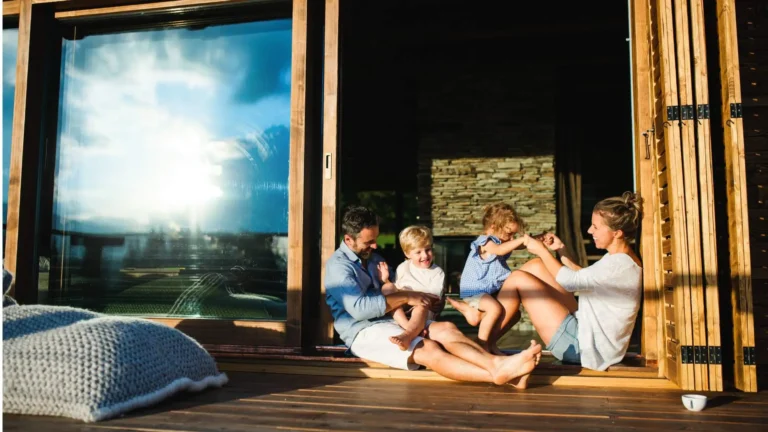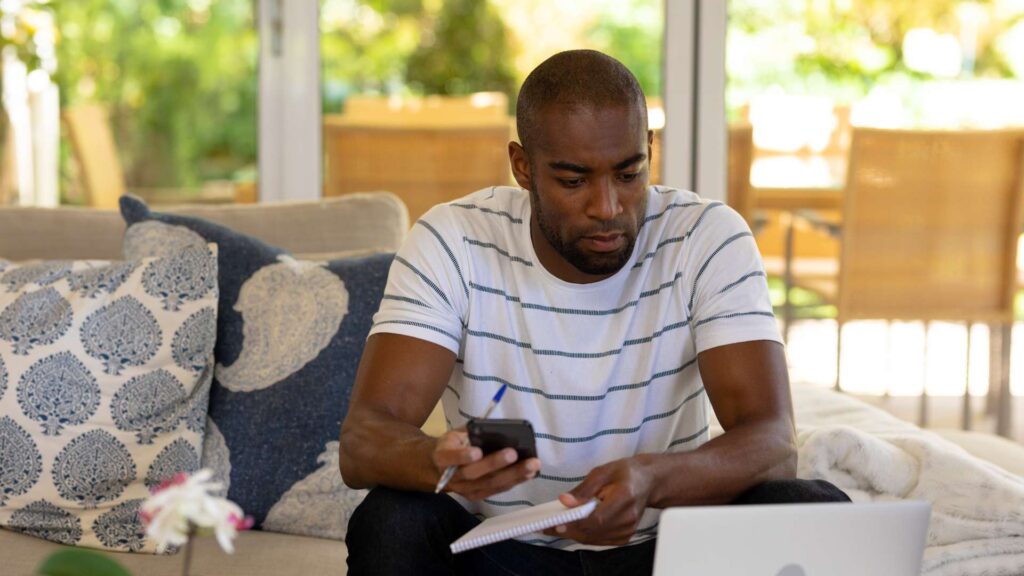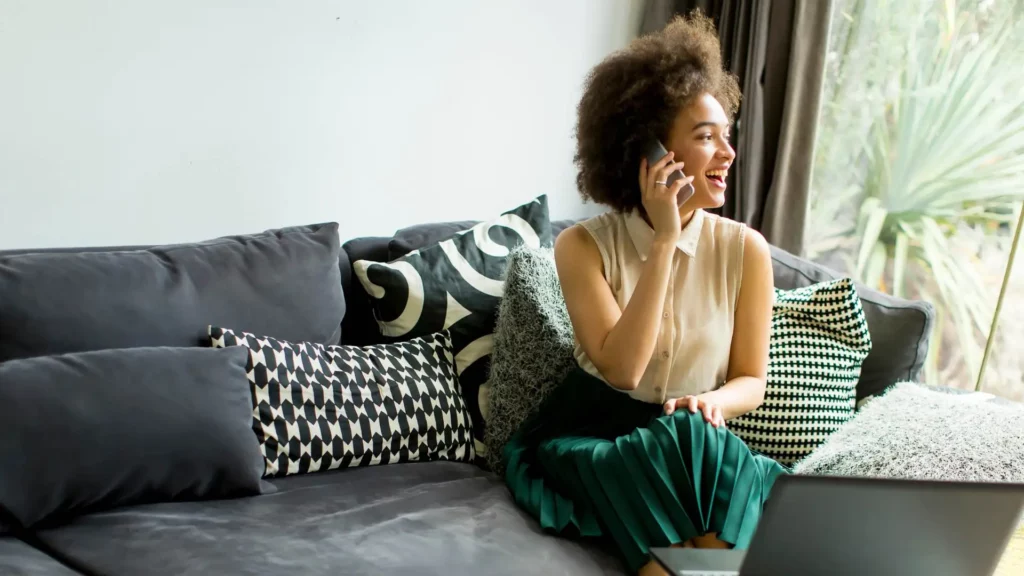Table of Contents
When most people think of vacations, their minds conjure images of crowded airports, passport stamps, exotic beaches, or cobblestone European streets. But vacations don’t always have to be far away or expensive to be fulfilling. Increasingly, travelers are discovering that the reset they crave can happen without leaving their hometown — or even their living room.
Welcome to the world of staycations.
At first glance, a staycation sounds like just “staying home.” And if approached without structure, that’s exactly how it feels: another lazy weekend filled with chores, streaming binges, and scrolling through your phone. But when you plan it with intention — setting themes, building itineraries, and creating budgets — a staycation can feel as exciting and refreshing as a trip abroad.
This blog explores the art of structured staycations. We’ll cover why they matter, how to design them thoughtfully, and what pitfalls to avoid. Along the way, you’ll see how Beem’s Budget Planner can help you turn your local time off into a true getaway, one that leaves you refreshed without draining your wallet.
Why Staycations Matter?
Staycations surged in popularity during global travel restrictions, but they’ve stayed relevant even as borders reopened. Why? Because people realized that the essence of a vacation isn’t distance — it’s disconnection and renewal. Staycations offer both, without the hassle of long-haul flights or missed connections.
Even major travel publications now highlight staycations as a sustainable, affordable alternative. They’re especially appealing for young professionals balancing tight budgets, families avoiding the stress of traveling with kids, and retirees looking for rest without long journeys.
Financial Benefits of Staying Local
The average international vacation for a family of four can cost several thousand dollars. Flights alone often consume half the budget, with hotels, meals, and activities making up the rest. A staycation eliminates airfare entirely and lets you save on lodging by sleeping at home or booking affordable local stays.
Instead of dropping $3,000 on a week abroad, you could spend $300–$500 on a structured staycation — indulging in luxuries like spa treatments, gourmet meals, or cultural excursions, all while staying within reach of home.
Emotional Rest Without Travel Stress
It’s ironic: many vacations require recovery once you return home. Jet lag, long flights, and tight schedules often mean you come back more tired than when you left. Staycations bypass that fatigue. With no time zones to adjust to and no transit chaos, you focus entirely on relaxation and connection. The absence of travel stress makes your break more restorative.
Read on How to Get Cheap Hotels.
Building Structure Into a Staycation
Treat It Like a Real Trip
The mindset shift is key. If you treat your staycation as “time off,” you’ll likely end up catching up on laundry or doomscrolling. But if you treat it as a vacation, it transforms. Start by setting dates in your calendar and notifying friends, family, and colleagues that you’re “away.” Even if you’re physically at home, mentally you’re elsewhere.
Create a loose itinerary: mornings for exploration, afternoons for rest, evenings for indulgence. Plan meals, activities, and downtime. The structure makes the difference between a dull weekend and a rejuvenating mini-trip.
Set a Theme or Focus
Themes give your staycation personality. Some popular ones:
- Wellness Retreat: Yoga sessions, meditation, spa treatments, and healthy meals.
- Cultural Exploration: Museum visits, cooking ethnic cuisine, or watching international films.
- Adventure Mode: Day hikes, biking, or exploring new neighborhoods.
- Foodie Tour: Dining at new restaurants or recreating dishes from around the world at home.
The theme serves as your compass, guiding your itinerary and adding novelty to your staycation.
Balance Relaxation with Activity
Too much activity turns your staycation into a checklist. Too much rest makes it feel like any weekend. Balance is essential. For example:
- Morning: Visit a local farmer’s market.
- Afternoon: Nap or read at a park.
- Evening: Try a new restaurant or host a themed dinner at home.
This rhythm mimics the natural pace of a traditional vacation.
Planning Your Staycation Itinerary

Day 1 Kick-Off Ritual
Vacations start with a signal — boarding a plane, checking into a hotel. Staycations need one, too. Your kickoff ritual could be:
- Booking into a local boutique hotel for the first night.
- Lighting candles and turning off your phone.
- Declaring a “no chores” rule for the duration.
That symbolic start separates your staycation from regular life.
Explore Local Hidden Gems
Pretend you’re a tourist in your own city. Search online for “things to do in [your city]” and you’ll likely find activities you’ve never tried. Walking tours, art installations, botanical gardens, and historical landmarks often go unnoticed by locals.
Rediscovering your hometown brings a fresh perspective — and it costs a fraction of the cost of long-distance travel.
Create “Travel” Meals
Food anchors travel memories. On a staycation, you can recreate that by experimenting with new cuisines. Dedicate one evening to Italian pasta-making, another to Japanese sushi rolling, and another to a backyard barbecue. Alternatively, plan a local restaurant crawl — picking eateries you’ve never tried.
Eating differently than you normally do is what makes the experience feel special.
Incorporate Learning or Creativity
Vacations often inspire us to try new things, whether it’s surfing lessons or pottery classes. Staycations can replicate this by scheduling creative or educational activities. A painting workshop, dance class, or even an online language-learning session brings novelty to your time off.
Read: How To Save Money For A Vacation In 6 Months
Budgeting for a Staycation
Decide How Much You Want to Spend
Without a budget, even staycations can quickly spiral out of control. Multiple dinners out, shopping splurges, or activity tickets add up quickly. Setting a clear financial boundary makes your staycation intentional. Decide upfront: is your budget $200, $500, or $1,000? Then design your itinerary to fit.
Use Beem’s Budget Planner
Beem’s Budget Planner lets you allocate funds across categories like food, entertainment, and relaxation. You can set daily spending goals, track expenses in real time, and see how much you have left for indulgences. This structure ensures you stay on track while still enjoying the luxuries that make your staycation memorable.
Invest in Small Luxuries
One of the best parts of staycations is that your budget stretches further. Since you’re not paying for flights or hotels, you can invest in small luxuries: a spa treatment, premium coffee, fresh linens, or even hiring a cleaning service so your home feels like a hotel. These touches elevate the experience without breaking the bank.
Adding Structure Without Losing Fun
Morning and Evening Rituals
Rituals set the tone. Start your days with a morning walk, a special breakfast, or journaling. End with a ritual like a movie night, meditation, or dessert. These bookends create rhythm and make each day feel intentional.
Limit Screen Time and Routine Chores
Nothing kills a staycation faster than slipping back into normal routines. Set boundaries: no work emails, no chores, and limited social media. Treat your home like a hotel, where dishes and laundry don’t exist.
Capture the Moments
Take photos, keep a journal, or make a scrapbook. Documenting your staycation reinforces that it was a unique event, not just “time off.” Looking back later, you’ll remember it as fondly as any trip abroad.
Common Mistakes to Avoid
Treating It Like an Extra Weekend
If you don’t commit, your staycation will feel ordinary. The difference is in structure: themes, itineraries, and boundaries.
Over-Scheduling Every Minute
Structure is vital, but flexibility is equally important. Leave room for spontaneity — naps, impromptu outings, or lazy afternoons.
Ignoring the Budget
It’s easy to underestimate costs, especially when every purchase feels “small.” Tracking expenses with Beem prevents overspending and ensures your staycation remains affordable.
Discover How To Save Money Over The Holidays.
Real-Life Examples of Structured Staycations
- Paris at Home: A couple recreated Paris with French meals, café-style breakfasts, and a visit to a local art exhibit. Their $150 budget delivered a romantic weekend without flights.
- Family Adventure: The Johnsons set a $300 budget with Beem. They explored local parks, had themed movie nights, and booked a spa afternoon for the parents. Everyone felt recharged without overspending.
- Solo Explorer: Maya, a young professional, booked a boutique hotel downtown. She explored new neighborhoods by day and journaled by night. The structure made her staycation feel like solo travel abroad.
FAQs on Staycations
1. How do I make a staycation feel like a real trip?
The trick is to treat it like you’re going somewhere new, even if you’re not. Block off the dates, set an out-of-office email, and give yourself permission to unplug. Add fun touches like themed meals, a little “itinerary,” or even checking into a local hotel for one night. It’s less about where you are and more about how you frame the experience — when you commit, it really does feel like a getaway.
2. What’s the ideal length of a staycation?
Most people find two to four days works best. That’s just enough time to shake off stress, try new things, and still stay within budget. A single day can feel like a regular weekend, while a full week might tempt you back into chores or work. Start small — like a long weekend — and see how refreshed you feel. You can always plan a longer one next time if it works for you.
3. Can staycations really help with burnout?
Absolutely. Burnout doesn’t care if you’re on a tropical island or your own couch — what matters is how you use the time. A staycation gives you space to rest, recharge, and break your daily routine without the stress of airports or big expenses. Trying new things in your own city or just slowing down with intention can give you that “ahhh” moment your body and mind are craving.
4. How much should I budget for a staycation?
The beauty of a staycation is that you’re in full control. Some people pull off a refreshing one for under $100 with picnics, free events, and DIY spa nights. Others like to spend a few hundred on restaurant splurges, museum passes, or a fancy hotel room. Using a tool like Beem’s Budget Planner helps you set aside just the right amount, so you enjoy yourself without stressing over money.
5. How does Beem help plan affordable staycations?
Think of Beem as your personal staycation planner in your pocket. You can create categories like “food,” “activities,” or “little luxuries,” and track your spending in real time. You could even set up a small sinking fund months in advance so when your staycation arrives, the money is ready to go. That way, you can splurge on things that make your time feel special — without any guilt or budget hangovers afterward.
Conclusion
Staycations prove that you don’t need to travel far to truly recharge. With a little planning, creativity, and intention, a staycation can feel just as refreshing and memorable as a getaway. The secret lies in treating it like a real vacation — setting dates, making an itinerary, and budgeting intentionally for experiences that bring you joy.
Beem makes this easier. With Beem’s Budget Planner, you can plan your staycation expenses, track local experiences, and allocate funds for small luxuries without financial stress. If an unexpected cost arises — maybe a last-minute spa booking or a splurge-worthy meal — Beem Everdraft™ gives you instant access to up to $1,000, with no credit checks or interest.
Beem’s AI-driven tools, including Cashflow AI, Job Loss Protect™, and Smart Financial Insights, help you manage your money confidently — not just for your next trip, but for every moment in between.
Download the Beem app today to plan smarter, relax fully, and turn your next staycation into a meaningful, budget-friendly adventure right where you are.















































